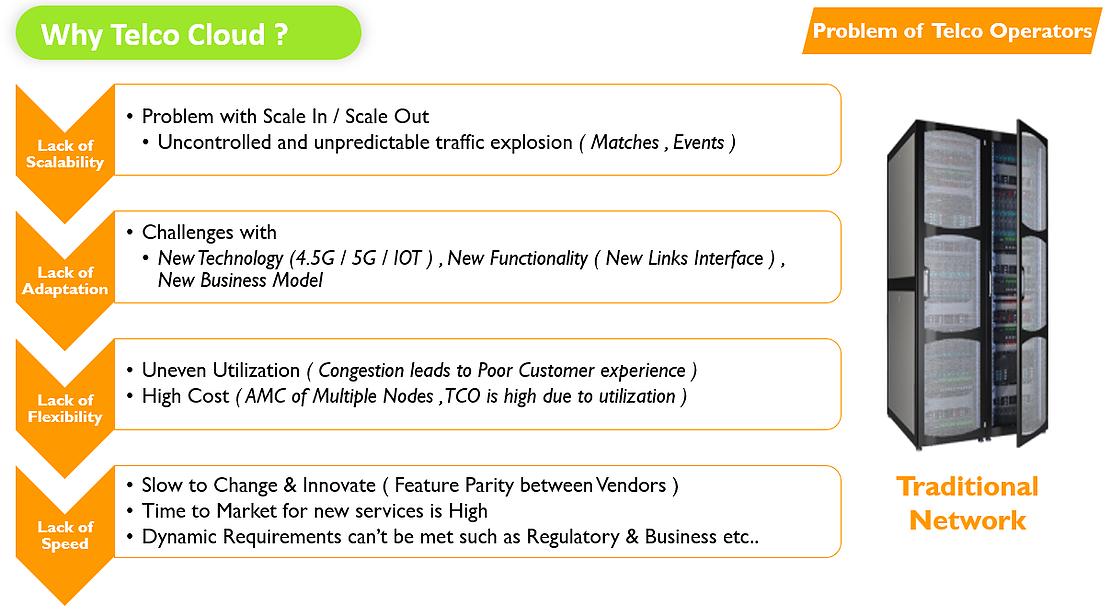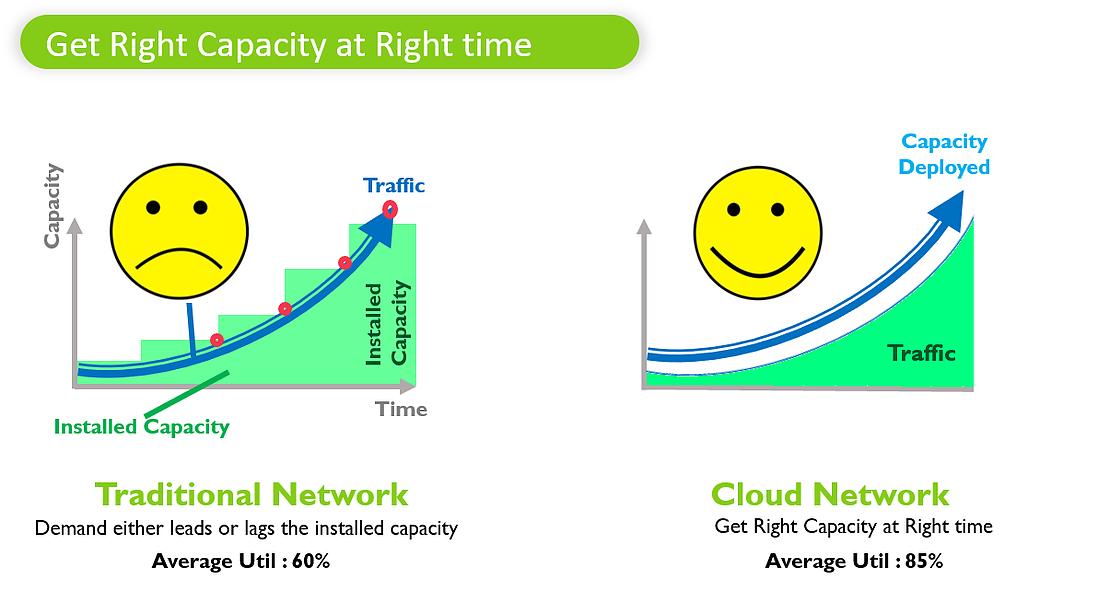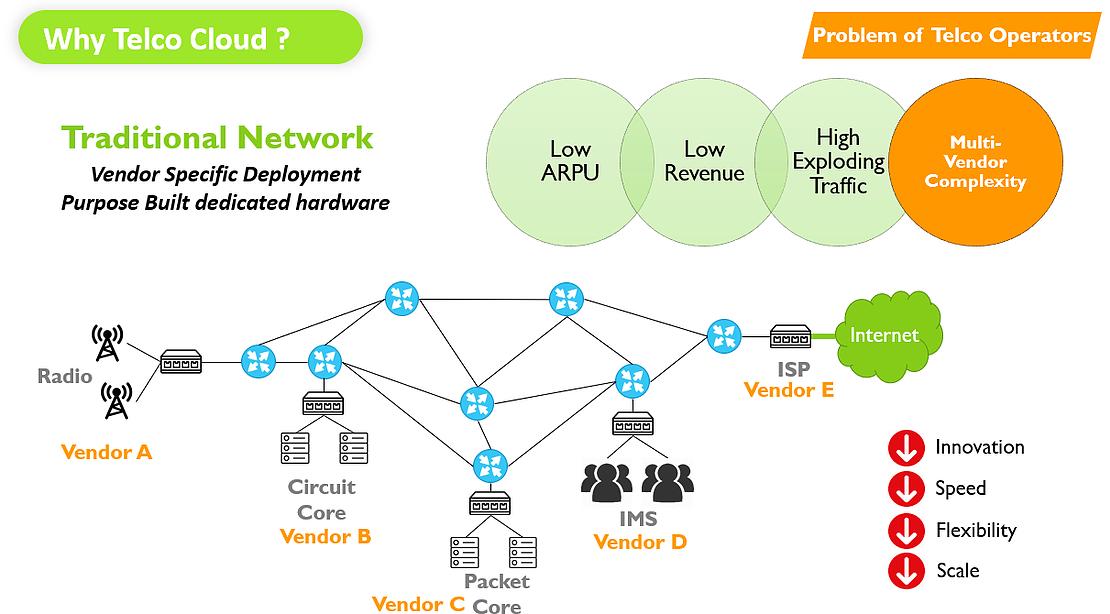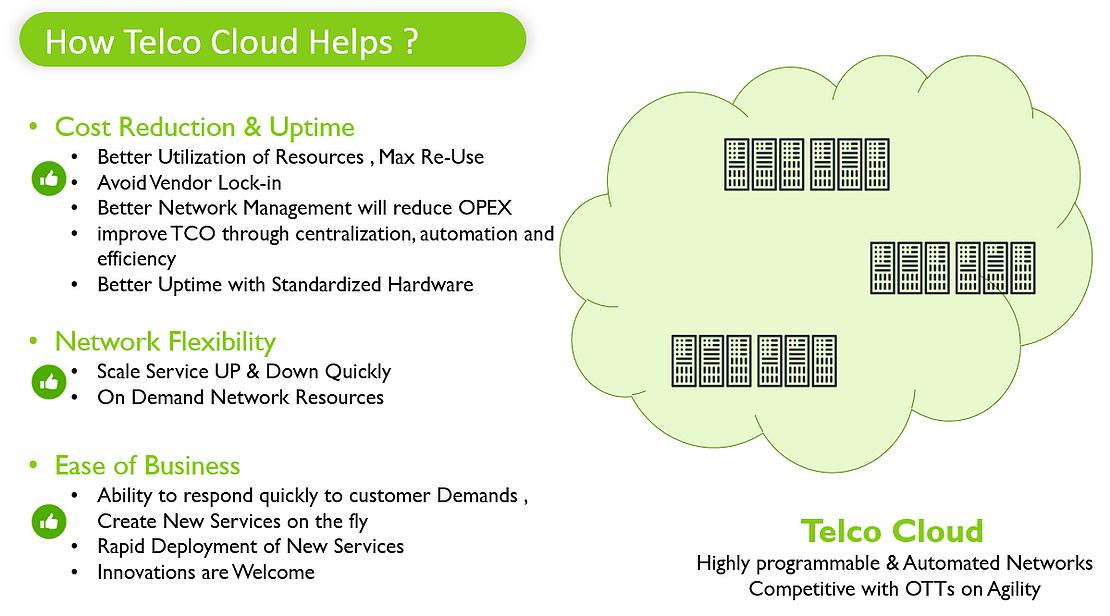
7 minute read
The Cloud Solution
Now, Let’s understand what value proposition cloud brings it to us. Take similar situation where users are using Cloud Native PACO GGSN this time
1.
Advertisement
2.
3. With start of Match, Traffic & Users will start shooting up & eventually will reach to 90-95%. Now, Cloud Manager wakes up and analyse that situation is bad & we need to do something as utilization is overshooting. Cloud manager is actually VNFM Instance which is internal component of cloud Native network looks after overall health & utilization of Cloud network including FCAPS (fault-management, configuration, accounting, performance, and security). Here, Cloud Manager will see that utilization is overshooting and it will scale out new capacity on the fly to address this high traffic. You can see this scale out on screen where new Virtual machines are put onto the task to handle this exploding traffic Now, Let’s assume that Match is very very interesting, the traffic is still increasing & We need to have more compute and processing. With help of Automation & Orchestrator, The Cloud networks can further scale new capacities by creating new GGSN at New location where-ever we are having some free hardware available in Network With help of NFV, we create the new capacities and with help of SDN, we can create highways and pathways to provide connectivity between users and this new Node to offload some of traffic. Now, you can see the power of this cloud network to handle traffic more effectively and in flexible way to meet any dynamic user requirements
Why Telco Cloud?
Now, Let’s understand the true problems of Mobile Operators & How cloud solve this.
1. The 1st problem is the Lack of Scalability: which we have already seen, this includes the Problem with Scaling In / Scaling Out the capacities. This includes handling of Uncontrolled and unpredictable traffic explosion which is usually seen during Matches, Events etc.
5 | P a g e
2. The 2nd issue is Lack of Adaptation: In telecom domain there is lot of Inter-Op testing required between two nodes for making it operational with traditional hardware, there is always challenge with new Technology such as 5G & IOT. There are also issues with New Functionality such as New Links or New Interface required. Moreover, there is always lots of adaptation required for any New Business Model which usually gets delayed with traditional hardware
3. The 3rd issues are with Lack of Flexibility where you can’t balance traffic between two nodes. Typically Voice traffic peaks at 1900 hrs where Data traffic peaks at 2300 hrs. You can’t shuffle resources between circuit switch network & packet Core network in case of traditional networks. In case of Cloud Native deployment, you easily move virtual machines to ensure optimum loading and load balancing of traffic between various nodes. This will not only improve user experience but also will save CAPEX Investment
Moreover, there is always high amount of OPEX required in AMC and keeping spares available for Traditional hardware. This cost can also be saved by migrating to Cloud Native network where overall TCO is less.
4. In last, there is always Lack of Speed with traditional networks such as Slow to Change & Innovate. One feature will be available with one vendor but not available with another one. With Cloud Native networks, you can easily switch the Vendors to avoid Vendor Lock in & get benefits. With Traditional network, Your Time to Market for new services is High & Dynamic Requirements can’t be met such as raised by Regulatory or Business teams
Get Right Capacity at Right time

With Traditional networks, Manual capacity planning & Deployment are incompetent to handle utilization properly. There is always delayed response to rapid & unpredictable growth in traffic. Delays in Supply chain, Import are further going to make situation worse. As we are aware that Traditional networks takes much more time, much more cost, much more manpower in deployment of capacity 6 | P a g e
With conventional planning & traditional Network, actual Traffic either leads or lags the installed capacity. Due to this, if you delay deployment, your customers are going to suffer due to High Traffic, if you prepone Deployment, you will end up in deploying too much of wasted capacity. On left hand side, you can see capacity being deployed in stair-case model where Red-Spots are showing Customers suffering with traditional networks due to High utilization
Cloud Native networks provides Right capacity at right time. You can see this in Graph on right hand side. In Cloud based networks, we deploy Generic Hardware in advance & capacities are procured and deployed in terms of Software License. There are 2 efficiencies which Software based capacity brings to us –1st One is speed of Expansion. License can be expanded on the fly as & when required, 2nd one is Costing model. Basically, you can pay as per user licenses rather that deployed license. This brings lot of Cost saving and None of Money wasted on these licenses are sitting idle and wasting money as happens in Traditional networks
Cloud network means traffic follows installed capacity very closely. There is ample usage of resources. There is Lower planning, procurement and deployment effort required which will not only save money but also keeps your customers happy as utilization are always in control
Problem of Telco Operators

There are 4 Main problem of every Carrier or Mobile Operator ….
• Low ARPU • Low Revenue as compared to • High Exploding Traffic • Multi-Vendor complexity
This is typical example of Traditional Mobile operator Network where we can see Radio from one Vendor, Circuit core from another vendor, Packet Core from different vendor & VoLTE
7 | P a g e
IMS from some other vendor. This brings lots of complicacy where every new feature functionality takes lot of time and there is always challenge in day to day Operations
With Cloud Networks, you can simply download & Install Node & Vendor of your choice avoiding Vendor Lock in. These possibilities are not there with Traditional networks. Ultimately Cloud networks are going to help Mobile operator to improve Innovation cycle, Increase Speed of deployment & implementing new features, Better Flexibility & Solve the Scale problem
These benefits ultimately lead to better user experience & Innovative products leading to new revenue streams and ultimately helps in improving Revenues & ARPU
How Telco Cloud Helps?

The cloud Network for Telecom Operator improves the Investment cycle by reducing TCO and improve operational efficiency. Investing in Cloud based network rather than Traditional networks will bring Strategic Alignment, Mitigate the Risks of Legacy Investment, Improve Return of Investment, Make the networks Future Proof
Typical benefits for Cloud Networks will bring below benefits
Cost Reduction & Uptime
1. Better Utilization of Resources, Max Re-Use 2. Avoid Vendor Lock-in 3. Better Network Management will reduce OPEX 4. improve TCO through centralization, automation and efficiency 5. Better Uptime with Standardized Hardware
Network Flexibility
1. Scale Service UP & Down Quickly 2. On Demand Network Resources
8 | P a g e
Ease of Business
1. Ability to respond quickly to customer Demands, Create New Services on the fly 2. Rapid Deployment of New Services 3. Innovations are Welcome
Cloud Solution

Here, I am trying to show, how we are going to run these networks in Future once these are Virtualized. On Left hand side, you can see traditional networks which are having Traditional Rack / Stack Model. Here every Rack represents one type of Node. These traditional nodes are specifically meant on One Function or One Purpose. We also call them as Purpose build hardware. These nodes could be HLR, MSCs, SMSC, VAS Nodes etc. Typically installed in Switch Room
Cloudification or Virtualization is journey to migrate this Purpose build hardware running in Switch rooms to the Virtualized Nodes running Generic hardware deployed in Data Centre
Three Transitions have been discussed here 1. Switch Rooms to Data Centres 2. Purpose build hardware such as HLR by Nokia, MSC by Ericsson to Generic hardware such as Dell or HP 3. Physical device in rack to Virtual Device in Cloud Network 4. In last, we will also discuss and use Vendor specific software to Open source software such as Open stack etc.
The cloud native network will be basically set of Multiple clouds running powered by Open stack Cloud Managers
9 | P a g e

In this example, I have tried to show migration of physical and traditional HLR or MSC or PGW or Router into Virtualized device running in Cloud. Please Note … They all share common hardware which is Generic One such as Dell or HP
Well, now we have understood high level benefits and requirements of Cloud Native or Virtualized networks for Telco Operators. In Next document, I am going to cover how NFV works & how it’s different from SDN
10 | P a g e



